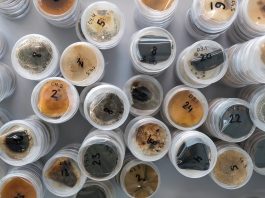Researchers at the University of York have discovered an enzyme in a fungus that could provide a breakthrough in the upscaling of renewable fuels and chemicals.
The enzyme releases a valuable chemical from agricultural waste and can thus act as a catalyst to the biochemical reaction that breaks down lignocellulose, which could potentially be used as a sustainable resource to produce renewable fuels and chemicals.
Lignocellulose is present in forestry and agricultural waste such as wheat straw. Scientists believe that it could be used to produce biofuels and chemicals if a method of breaking it down and processing it affectively is discovered.
Professor Neil Bruce from the Department of Biology and Director of the Centre for Novel Agricultural Products (CNAP) said: “We believe this discovery is important as there is much interest in using lignocellulose as renewable and sustainable resource for the production of liquid fuels and chemicals.
“Although lignocellulose is one of the most abundant forms of fixed carbon in the biosphere, the use of lignocellulose as a material to supply bioindustry has been hampered by its composition and structure, which renders it highly obstinate to degradation.
“This is, in part, due to the presence of lignin, a complex aromatic polymer that encases the structure to block enzyme accessibility.”
Currently, there is not an effective industrial biocatalytic process capable of breaking down lignin. However, the researchers discovered that an enzyme produced by a fungus called Parascedosporium putredinis NO1, is able to break through the lignin and begin the necessary process of degradation to produce renewable fuels and chemicals.
Professor Bruce added: “P. putredinis NO1 is able to dominate cultures in the latter stages of wheat straw degradation in a mixed microbial community when easily accessible polysaccharides have been exhausted.
“We demonstrate that treatments with this enzyme can increase the digestibility of lignocellulosic biomass, offering the possibility of producing a valuable product from lignin while decreasing processing costs.”
This research was published in the journal PNAS, and was conducted in collaboration with the Department of Energy’s Great Lakes Bioenergy Research Center at the Wisconsin Energy Institute, and the University of Wisconsin, USA.









